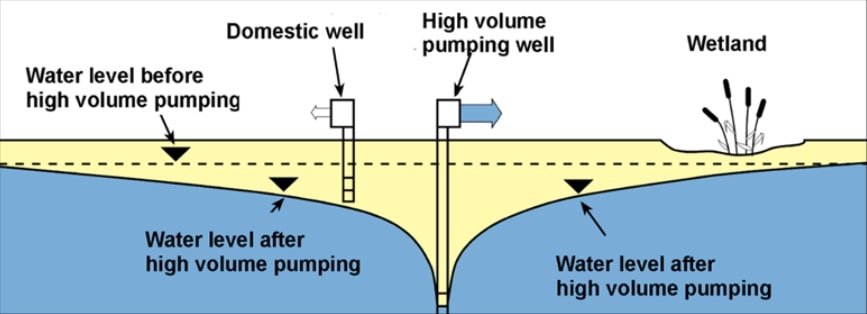DNR: Blaine dried out wells at dozens of nearby homes last summer
State officials say an investigation determined that the city of Blaine’s water supply wells were the main cause of water supply issues that dozens of nearby homes experienced last summer.
The Minnesota Department of Natural Resources (DNR) announced its findings Tuesday, saying the agency is now working with Blaine and those who were impacted by the city’s well interference on a settlement.
The DNR says it got 50 complaints from private well owners in the Blaine and Ham Lake area in the summer of 2022, with residents reporting their home wells were running dry.
After looking into the complaints, the DNR learned that Blaine was operating three unpermitted wells. The agency relayed that to the city, which then stopped pumping from those wells.
A more thorough investigation showed that 47 of those 50 complaints were valid, and Blaine’s water supply wells sapped water from those residents’ wells. The DNR adds that two golf course irrigation wells also contributed slightly to one case of well interference. The other three complaints had problems that weren’t related to the city’s pumping, the DNR says.
According to the agency, the aquifers in the Blaine and Ham Lake area are very connected, meaning that pumping large amounts of water in one part can cause water levels to drop miles away. And, because domestic wells are typically not as deep as higher-volume wells like the city uses, those residents’ shallower wells dried out due to the city’s pumping.

Since then, the 47 residents with valid complaints have had their water supply restored and the agency is now working with all involved on a well-interference settlement process.
“Like many growing communities, the city of Blaine has been seeking to expand water supply sources to meet the increased water demands of its community,” DNR Conservation Assistance and Regulation Section Manager Randall Doneen said in a statement. “Expansion of water supplies is difficult and complex, especially when a growing community has many neighboring private domestic wells.”
The agency found that Blaine used 1.7 billion gallons of groundwater last year — about five times as much as all other high-volume users in that area combined.
It all came after the city built its Water Treatment Plant 4, which became operational in the summer of 2021. However, the city’s public works head said in a letter to the mayor and city council last August that the city had activated four new high-capacity wells that are part of that treatment plant and “had immediate impact to several nearby wells.” The letter notes that the city paid a contractor to lower the pump so it wouldn’t affect nearby wells but the city received several calls from affected residents.
The DNR’s report shows that those impacted residents had to pay hundreds and oftentimes thousands of dollars to have their wells inspected and deepened so they could start getting water again.
“While we know the city certainly didn’t intend to cause negative impacts on private domestic wells, this situation underscores the reality that Minnesota’s water supplies are not unlimited,” Doneen said.
“Blaine has worked closely with independent consultants and the DNR over the last several years as the city has enhanced our water infrastructure,” Blaine spokesperson Ben Hayle said. “The city has been anticipating the completion of this DNR investigation and is ready to continue to work with private well owners to mitigate impacts that are determined to be related to the city’s growing water infrastructure. Blaine is committed to responsibly providing high quality water service to our growing municipal customer base while also protecting private well owners.”
The DNR says it is still investigating another 24 complaints in the area, and anyone who has had water supply issues that may be due to high-capacity pumping should contact Claudia Hochstein at the DNR by calling 651-259-5034.
The agency has more information on well interference online, and its full investigative findings can be found here.